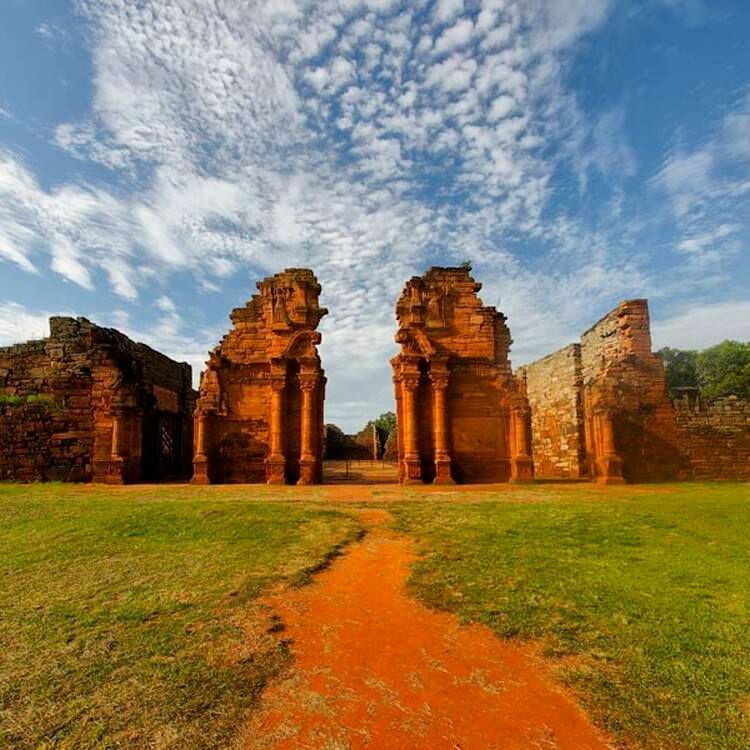
The best known ruins of the reduction of San Ignacio Miní, a Jesuit mission founded by the Jesuit priest, now San Roque González de Santa Cruz in the early 17th century to evangelise the Guaraní natives, are located in the present-day town of San Ignacio, in the Argentine province of Misiones, some 60 km from the provincial capital, Posadas.
Although the initial seat of San Ignacio Miní (San Ignacio Miní I) is located in the extreme north of the current Brazilian state of Paraná when between the 16th and 18th centuries the territory of that state formed the Hispano-Jesuit region of La Guayrá.
Nowadays, San Ignacio Miní is the best preserved of the missions in Argentinean territory.
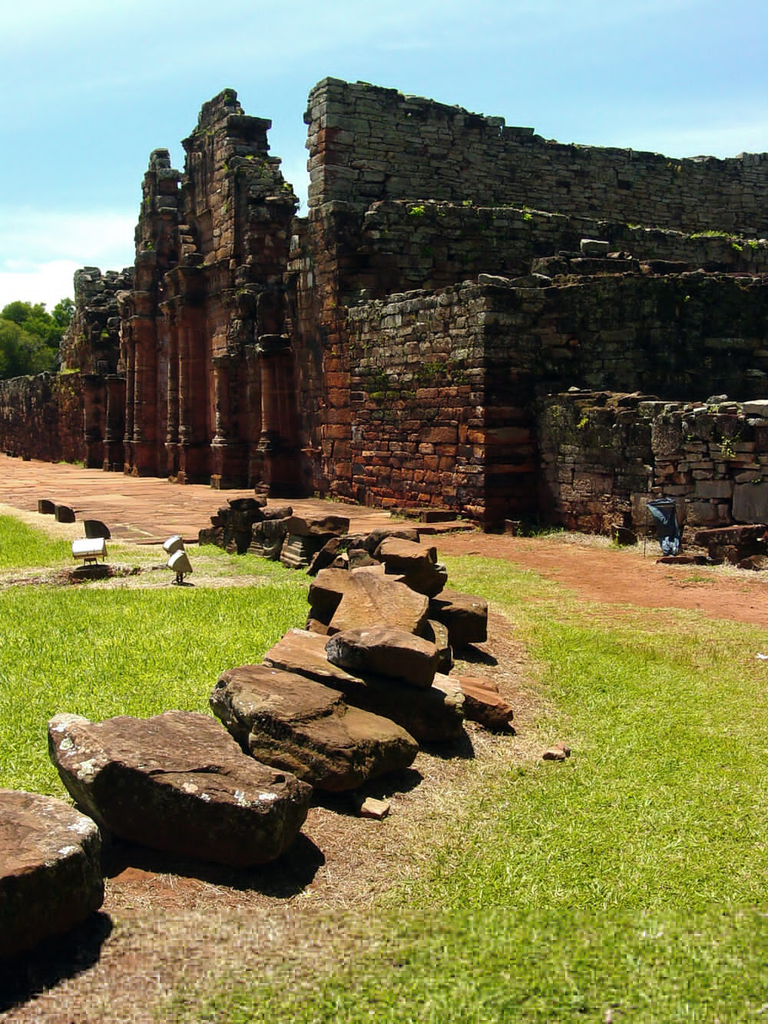
The layout of the mission is common to most of those built by the Jesuits at the time: around a central square are distributed the church, the Casa de los Padres, the cemetery, the dwellings and the cabildo.
In the construction of San Ignacio, the local stone, red asperon, was used in large pieces. The scale of the work has meant that, despite years of deterioration, most of the walls are still standing.
The Jesuit Ruins of the San Ignacio Miní Mission, together with those of Nuestra Señora de Loreto, Santa Ana and Santa María la Mayor (now in Argentina) and São Miguel (Brazil) were declared World Heritage Sites by UNESCO in 1984.
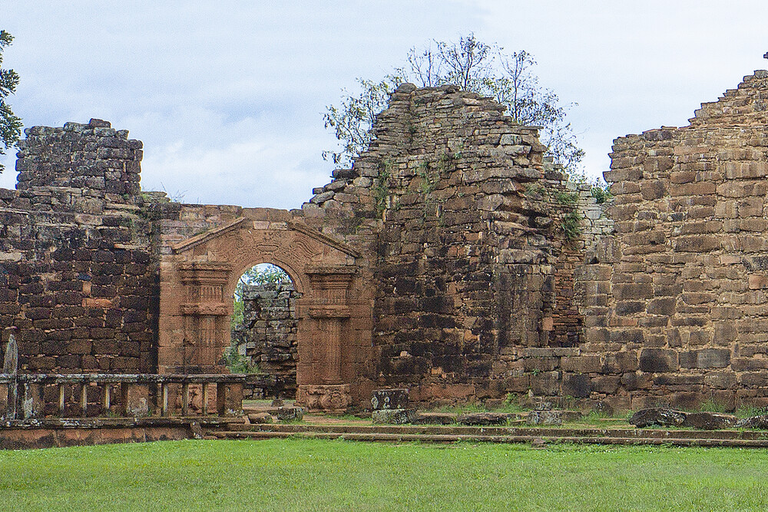
Those of Santísima Trinidad and Jesús, in Paraguay, were declared World Heritage Sites in 1993.
There is also an interpretation centre in the town, which provides information on the history and culture of the missions, as well as organising educational shows.
It was built entirely of pink sandstone. Its design, probably by the brother architect Jose Bassanelli, is an excellent example of the American Baroque.
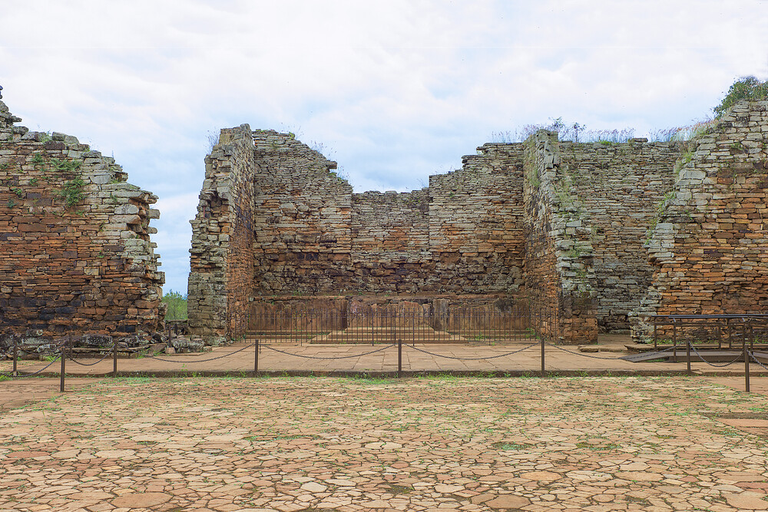
When the Reductions of Vera and Guairá were destroyed by the Mamelukes of San Pablo, the missionaries migrated down the Paraná River to the Yabebiry stream, where they camped.
In this camp, due to the scarcity of food and the lack of hygiene among the numerous indigenous groups, a terrible plague developed among them and their surroundings, which decimated in a few months the colony of Guaireños and a good part of the inhabitants of the region.
It was founded, together with Nuestra Señora de Loreto, by Fathers José Cataldino and Simón Masseta in 1610. They had been sent by the first Provincial of the Missions, Father Diego de Torres, to evangelise the Guayrá region. Father Antonio Ruiz de Montoya led the exodus of 12,000 natives through the jungles and rivers of the region. After several temporary settlements, in 1696 it was definitively established.
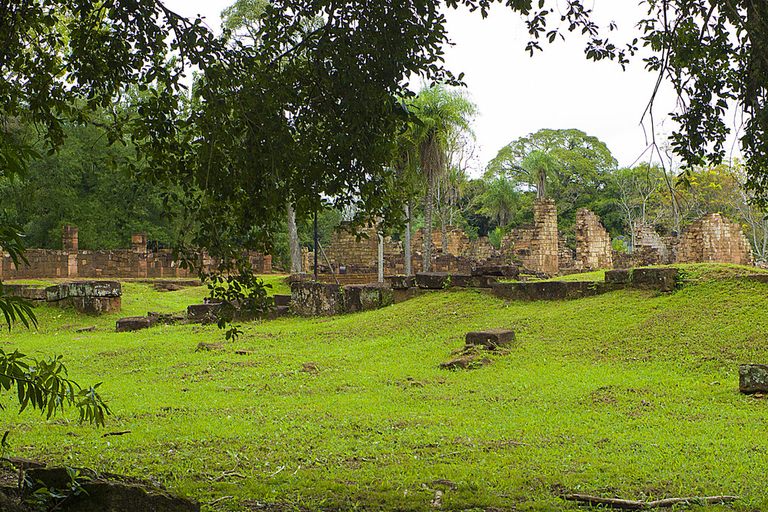
At its peak it had a population of 4,500 Guaraní. After the Jesuits were expelled in 1767, San Ignacio Miní survived until it was destroyed, like other villages, during the border war of 1817. In spite of this, a group of Guaraní under the command of Cacique Cristaldo, returned to settle there. This repopulation did not prosper because the Paraguayan troops ravaged the Paraná villages in 1821.
The ruins of the settlement have been inserted into the layout of the present-day town of San Ignacio. Outside the enclosed perimeter, there are parts of the urban centre and, beyond it, traces of different complementary works, such as canalisations and ditches.
The urban plan of the mission (a typology that was repeated in all the others) was organised around the square and was presided over by the complex comprising the chapter house and the main church, with baptistery and sacristy, on one side of which were the fathers' house, the school, the refectory, the courtyard of the workshops and warehouses; and on the other, the cemetery, the vegetable garden and the coty-guazu.
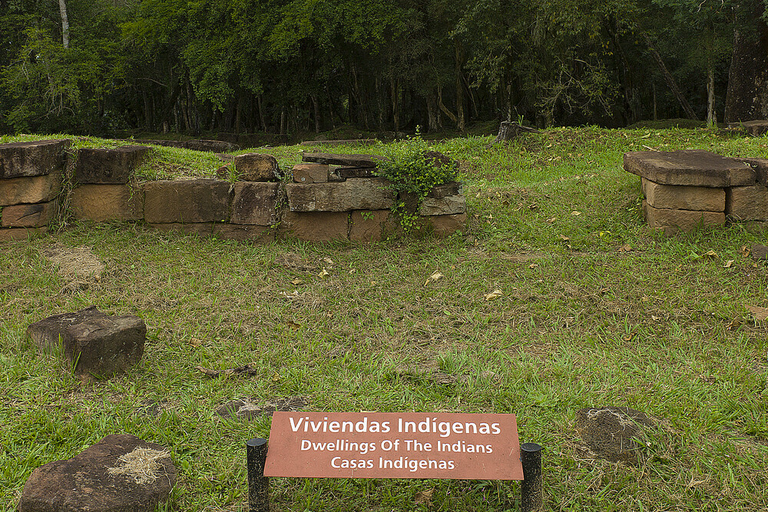
The strips of Indian housing, with their double galleries, completed the limits of the square. The main entrance, from the north, was a central street whose perspective, focused on the front of the church, shows the baroque conception with which the urban space was structured in the missions.
The main temple, with three naves, was built with local red asperon stones, which were originally laid in a perfect fit, without mortar; the roof was made of tiles, with a gabled roof, supported by a wooden structure. Elaborate carved stone designs highlighted the main sectors of the temple, such as the entrance portal, the sacristy, and the one that connected the temple with the school. In the figures of angels, doves and motifs of the local flora, the Guaraní mark can be appreciated. The design of other architectural elements, such as the floors and balusters, is very interesting.
Restored between 1940/50, San Ignacio is the best-preserved complex in Argentina. It has been on the UNESCO World Heritage List since 1984. It is home to the Jesuit Museum of San Ignacio Miní.
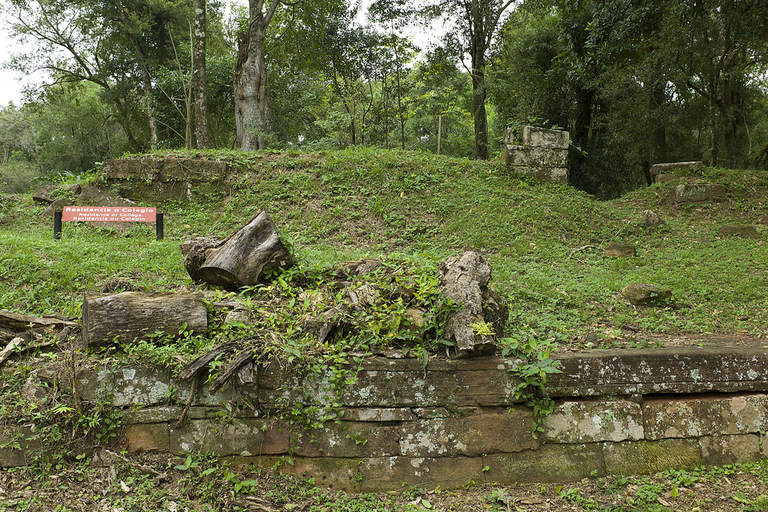

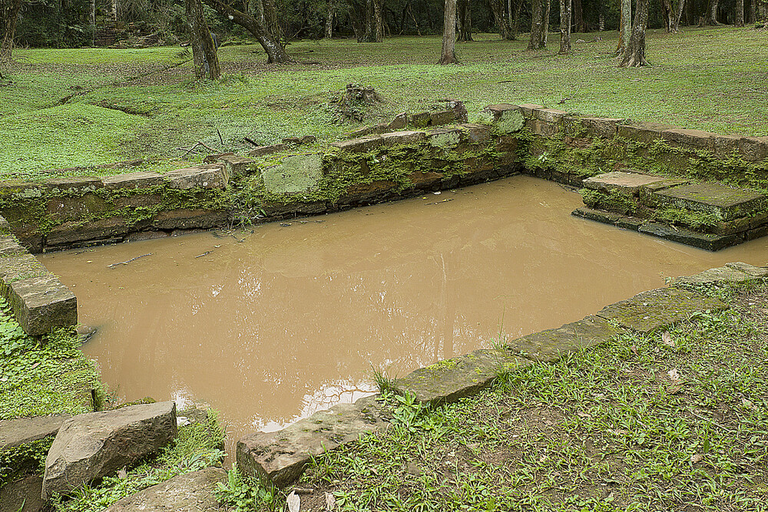
Las ruinas más conocidas de la reducción de San Ignacio Miní, una misión jesuítica fundada por el padre jesuita, hoy san Roque González de Santa Cruz a comienzos del siglo XVII para evangelizar a los nativos guaraníes, se encuentran en la actual localidad de San Ignacio, en la provincia argentina de Misiones, distantes unos 60 km de la capital provincial, Posadas.
Aunque el asiento inicial de San Ignacio Miní (San Ignacio Miní I) se ubica en el extremo norte del actual estado brasileño de Paraná cuando entre los siglos XVI y XVIII el territorio de tal estado formaba la región hispanojesuítica de La Guayrá.
En la actualidad San Ignacio Miní es la mejor conservada de las misiones en territorio argentino.
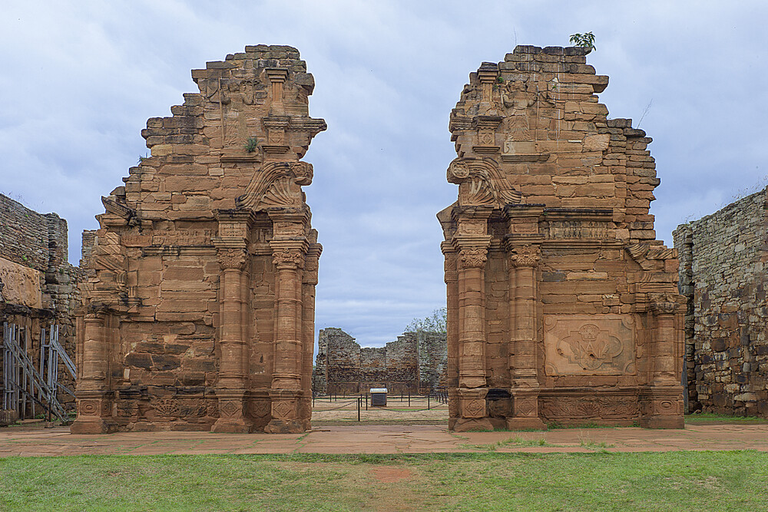
La planta de la misión es la común a la mayoría de las construidas por los jesuitas en la época: alrededor de una plaza central se distribuyen la iglesia, la Casa de los Padres, el cementerio, las viviendas y el cabildo.
En la construcción de San Ignacio se empleó la piedra local , el asperón rojo, en grandes piezas. La dimensión de los trabajos ha permitido que, pese a años de deterioro, la mayor parte de los muros siga en pie.
Las Ruinas Jesuíticas de la Misión de San Ignacio Miní , junto con las de Nuestra Señora de Loreto, Santa Ana y Santa María la Mayor (actualmente en Argentina) y São Miguel (Brasil) fueron declaradas Patrimonio Mundial de la Humanidad por la Unesco en 1984 .
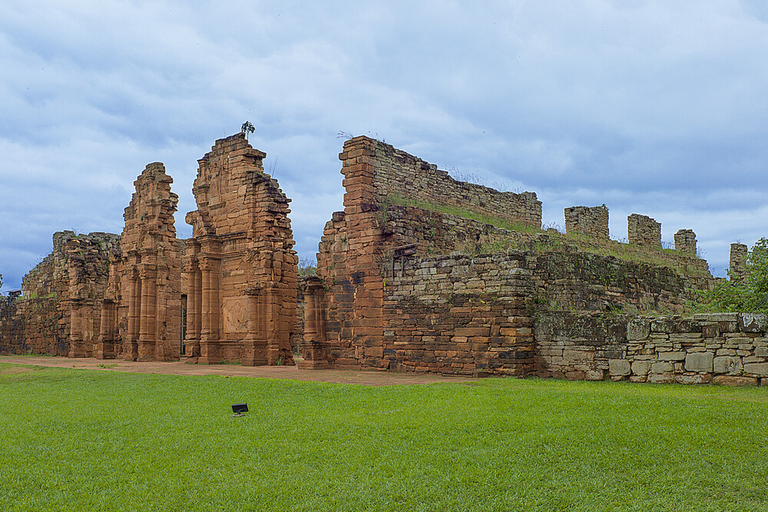
Las de Santísima Trinidad y Jesús, en Paraguay, fueron declaradas Patrimonio de la Humanidad en 1993
En la localidad se también encuentra un centro de interpretación, que proporciona información de la historia y la cultura de las misiones, además de organizar espectáculos didácticos.
Fue construída íntegramente en arenisca rosada. Su diseño que probablemente corresponda al arquitecto hermano Jose Bassanelli, constituye una excelente muestra del Barroco Americano.
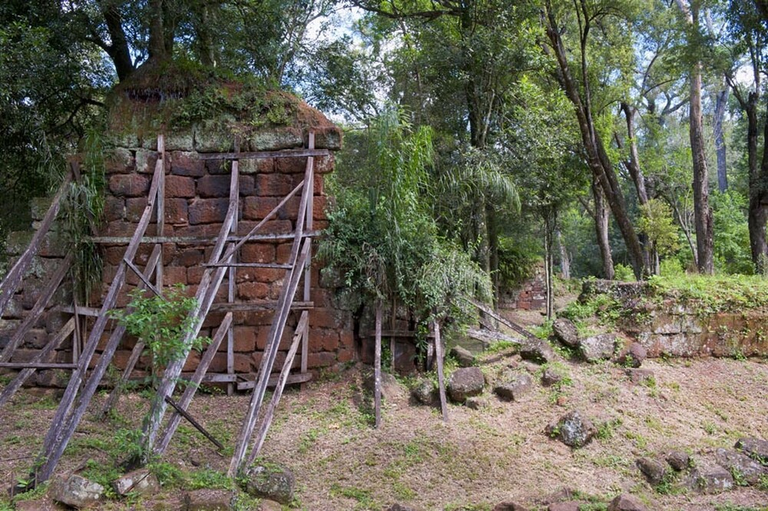
Al ser destruídas las Reducciones de Vera y Guairá, por los mamelucos de San Pablo, los misioneros emigraron Paraná abajo, hasta el arroyo Yabebiry,donde acamparon.
En este campamento, por efecto de la escaséz de alimentos, por la carencia de higiene entre los numerosos grupos indígenas, desarrollóse entre ellos y sus contornos una peste terrible que diezmó en pocos meses la colonia de guaireños y una buena parte de los habitantes de la comarca.
Fue fundada, junto con Nuestra Señora de Loreto, por los Padres José Cataldino y Simón Masseta en 1610. Habían sido enviados por el primer Provincial de las Misiones, Padre Diego de Torres, a evangelizar la región del Guayrá. El Padre Antonio Ruiz de Montoya condujo el éxodo de 12.000 aborígenes a través de las selvas y los ríos de la región. Luego de varios asentamientos temporarios, en 1696 se estableció definitivamente.
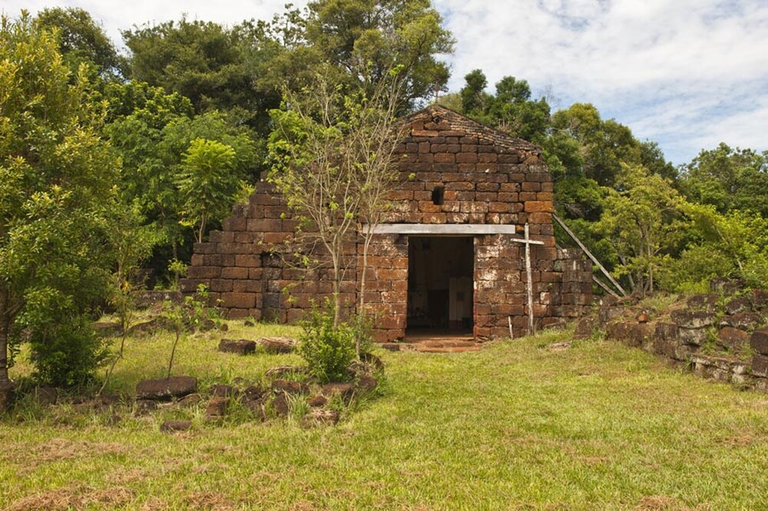
En su apogeo llegó a contar con una población de 4.500 guaraníes. Expulsados los Jesuitas en 1767, San Ignacio Miní sobrevivió hasta que fué destruída, como otros pueblos, durante la guerra de fronteras de 1817. A pesar de ello, un grupo de guaraníes al mando del Cacique Cristaldo, volvió a asentarse en el lugar. Esta repoblación no prosperó porque las tropas paraguayas asolaron los pueblos paranaenses en 1821.
Las ruínas del conjunto han quedado insertas en el trazado del actual pueblo de San Ignacio. Fuera del perímetro cercado se encuentran partes del núcleo urbano y, más allá, vestigios de distintas obras complementarias, como canalizaciones y tajamares.
La planta urbana de la misión (tipología que se repetía en todas las demas), se organizaba alrededor de la plaza y estaba presidida por el conjunto que integraban el cabildo y el templo mayor, con baptisterio y sacristía, a uno de cuyos costados se ubicaban la casa de los padres, la escuela, el refectorio, el patio de los talleres y depósitos; y al otro, el cementerio, la huerta y el coty-guazu.
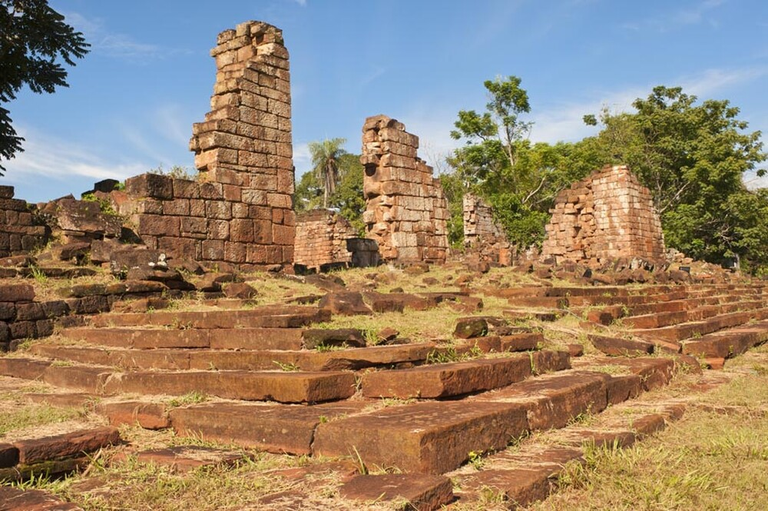
Las tiras de vivienda de los indios, con sus dobles galerías, completaban los límites de la plaza. La entrada principal, desde el norte, era una calle central cuya perspectiva, focalizada en la portada del templo, manifiesta la concepción barroca con que se estructuraba el espacio urbano en las misiones.
El templo mayor, de tres naves, fue construído con piedras de asperón rojo de la zona, que originalmente estaban asentadas con perfecto ajuste, sin argamasa; la cubierta era de tejas, a dos aguas, sostenida por estructura de madera. Elaborados diseños en piedra labrada destacaban los sectores principales del templo, como el portal de entrada, el de la sacristía, y el que conectaba el templo con la escuela. En las figuras de ángeles, palomas y motivos de la flora local se aprecia la impronta guaraní. Muy interesante es el diseño de otros elementos arquitectónicos, como los pisos y balaustres.
Restaurado entre 1940/50, San Ignacio es el conjunto mejor conservado en territorio argentino. Desde 1984, integra la lista del Patrimonio Mundial de la UNESCO. Es sede del Museo Jesuítico de San Ignacio Miní.
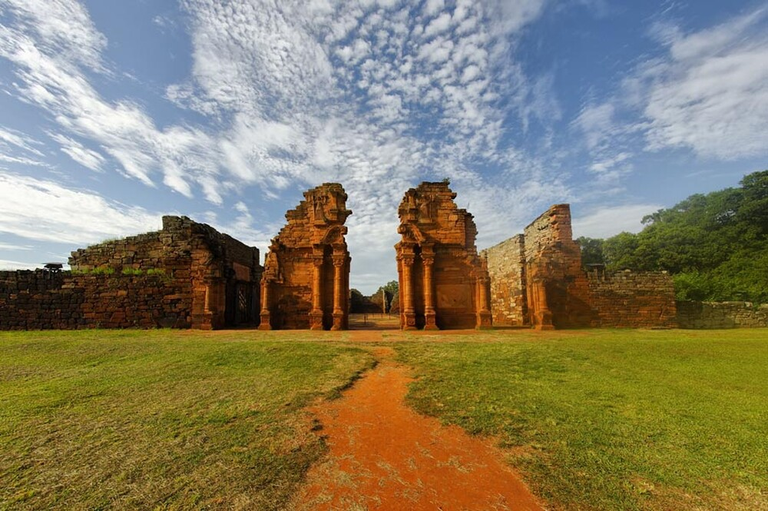
Source images / Fuente imágenes: [UNESCO.://whc.unesco.org/en/list/275)
Sources consulted (my own) for the preparation of this article. Some paragraphs may be reproduced verbatim.
Fuentes consultadas (de mi propiedad) para la elaboración del presente artículo. Algunos párrafos pueden estar reproducidos textualmente.
| Argentina Discovery. |  |
|---|---|
| Galería Fotográfica de Argentina. |  |
| Viaggio in Argentina. |  |
| Patagonia Express. |  |
